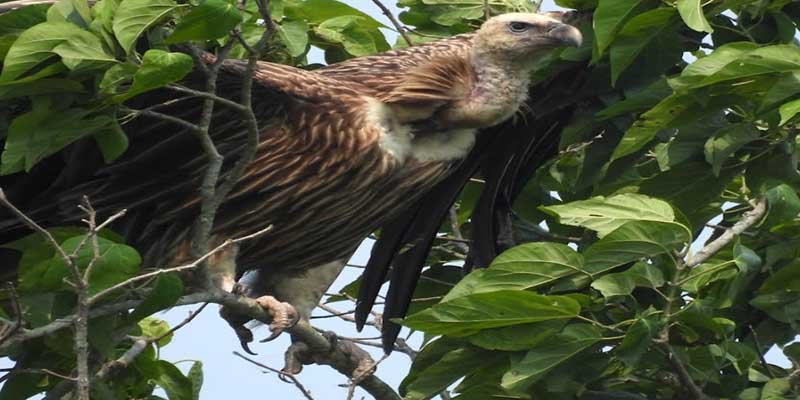Assam: Vulture treated for poisoning & released back into the wild in Bokakahat
The Himalayan Griffon vulture was discovered by villagers after it fell from a tree. Concerned for its well-being, they promptly alerted the Assam Forest Department.

BOKAKHAT- A Himalayan Griffon vulture, showing signs of poisoning, was rescued in a village in Bokakhat town of Golaghat district, Assam.
The bird was brought to the Centre for Wildlife Rehabilitation and Conservation (CWRC) for treatment and later released back into the wild by WTI-IFAW, Sonali Ghosh, IFS, Park Director Kaziranga NP & the Assam Forest Department on Thursday.
Also Read- 10-ft-long king cobra makes a late-night visit to a house near kaziranga
The Himalayan Griffon vulture was discovered by villagers after it fell from a tree. Concerned for its well-being, they promptly alerted the Assam Forest Department. The bird was rushed to the Centre for Wildlife Rehabilitation and Conservation (CWRC) at Kaziranga, a facility jointly run by WTI-IFAW and the department.
Upon examination, the bird was diagnosed with poisoning likely caused by feeding on a carcass. Under the WTI-IFAW veterinarians’ dedicated care, the vulture fully recovered from its critical condition. It was released in the Agoratoli eastern range of Kaziranga in Assam by WTI-IFAW, Sonali Ghosh, IFS, Park Director Kaziranga NP & the Assam Forest Department on Thursday.
Also Read- Romance in Sikkim : Visit Yuksom, Lachung, Yumthang Valley, Mount Katao
Dr. Sonali Ghosh, IFS, Field Director of Kaziranga National Park said, “It is heartening to see the Himalayan Griffon vulture taking its flight back to recovery. For over 22 years, team CWRC has been unwavering in the rescue and rehabilitation of distressed wildlife.”

Dr. Bhaskar Choudhury, Division Head, Wild Rescue and Head Vet NE, WTI said, “We have rescued 397 vultures between 2000 to 31st March 2024, and released 244 of them after treatment. These cases involve species such as the Himalayan Griffon, slender-billed, white-rumped, and cinereous vultures.”
Also Read- Gurudongmar Lake: The most amazing place in Sikkim
The toxicity in this case stemmed from pesticides. The goat carcass was seized by the Forest Department and an investigation has been initiated. Reports indicate that villagers frequently use poisoned livestock carcasses to target feral dogs that prey on livestock. Unfortunately, this practice unintentionally leads to the poisoning of vultures that feed on these carcasses.
The Himalayan Griffon vulture is categorised as ‘Near Threatened’ in the IUCN Red List. Vultures play a crucial role as scavengers, serving as the “sanitary engineers” of nature by feeding on carcasses of both wild and domestic animals. Several studies indicate that the decline of vulture populations in South Asia is largely attributed to poisoning incidents, including pesticides and certain livestock medications, which cause kidney failure in vultures, contributing significantly to mortality.









